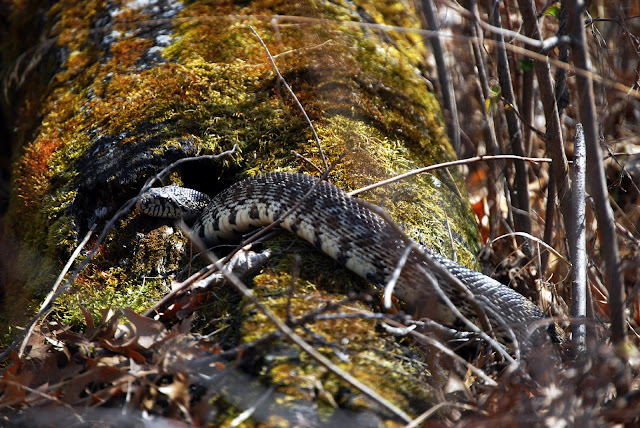May 23, 2010. As I navigated he Wildlife Drive at Sherburne National Wildlife Refuge today I was confronted by clouds of hungry two inch long Odonata. They showed no fear, and refused to get out of my way. I figured that no matter how slowly I drove some might die on my radiator grill. On the other hand to stop would be a commitment to spending the whole day sitting on the drive since they seemed to be hovering and darting back and forth with no particular purpose or direction to their travel. I got out of the truck to get a closer look. They were everywhere.
These large insects were flying endless loops, back and forth, at heights from about four feet up to ten or twelve feet above the road. Looking up I could see them dashing back and forth through my visual field. They filled the sky like the aeroplanes one sees in old war movies.
Odonata Darting, Looping, and Diving Like Aeroplanes in an Old War Movie
A number of them were perched on a roadside stick. With my close-up butterfly binoculars I was able to identify them as Spiny Baskettails (Tetragoneuria spinigera), one of Minnesota's earliest dragonflies.
Spiny Baskettail Dragonflies Resting. Perching Posture
Is Often A Clue in Identifying A Dragonfly Species.
Is Often A Clue in Identifying A Dragonfly Species.
I remember once spending a half hour watching members of four different dragonfly species patrolling a length of a leisurely flowing Florida stream. I was fascinated to observe that each species kept to it's own part of the stream habitat and used a unique flight pattern to cover the area. Three of the dragonflies defined their foraging territory by the height they flew above the water, and it never varied. The fourth patrolled only the area where the grassy bank met the water. One dragonfly never strayed into another's foraging space. Each of the three dragonflies patrolling over the open water had its own particular zig-zag pattern which it repeated again and again. In this regard dragonflies live much like forest birds where each has its own preferred foraging height, food, and behaviors, referred to as a niche. But not all dragonflies patrol continuously, Like some birds, some dragonfly species prefer to perch, then pounce on a passing meal. And like birds, dragonflies can be very territorial, with a dominant male chasing away all male intruders. Some male dragonflies guard and protect their mate while she is laying her eggs in or around the water.
As a little kid I was somewhat afraid of dragonflies. Their long sleek bodies made me think that they could sting. Their size made me think the sting would be mighty painful. Their quick erratic flight made me think there would be no way to elude one that wanted to sting me. All of these scary myths were reinforced by the kinds of folk beliefs and horror stories kids like to share.
Damsel flies, the other major component of the order Odonata, were in some ways scarier than dragonflies. Their bodies were longer and slimmer, even more suggestive of a stinger than a dragonfly body. I grew up in the age before swimming pools were common and these guys sometimes induced a little fright as they hovered around us down at the swimming holes on the local creeks.
Damsel Flies, Smaller Relatives of Dragonflies, Are Every Bit as Interesting.
Today I know that dragon flies and their much smaller relatives, the damsel flies, do not sting or attack people. I know that their Latin name, Odonata, means "tooth" and refers to the toothed lower lip that dragonflies (and their water-dwelling nymphs) use to grab and grasp the species they prey upon. Adult dragonflies eat mosquitoes and other flying insects they capture in midair. Close up I have actually heard a perched dragonfly munching on a captured prey insect. Dragonflies can capture even the fastest flying insects because they are amazing aerobatic fliers, able to make high-speed turns that seem to be right angles and they are the only insect that can truly hover and even fly backwards.
With all these fascinating characteristics its no wonder people love learning about dragonflies and have organized societies to observe and study them, much as they have organized societies to observe and study birds. Here are some internet resources where you can get more information about dragonflies and damselflies. Keep in mind that with an estimated 5,000 dragonfly and damselfly species in the world, of which about 435 are found in North America and more than 100 are found in Minnesota and Wisconsin, opportunities for observation abound.
A major resource for beginners and experts.
http://www.odesforbeginners.com/resources/res-organizations.aspx
Dragonfly Society of the Americas
http://www.odonatacentral.org/index.php/PageAction.get/name/HomePage
United States Geological Survey
http://www.npwrc.usgs.gov/resource/distr/insects/dfly/index.htm
Another good source of dragonfly information is the online Wikipedia, keywords Odonata and dragonflies.
For interested Minnesotans: The MN Odonata Survey Project
http://www.mndragonfly.org/resources.html
Any internet search will turn up lots of dragon fly books. For a beginner the best books are generally field guides focused on a local region because it is too easy to get lost and discouraged with the more comprehensive books.
An excellent field guide for Minnesota and Wisconsin residents is:
Mead, Kurt. Dragonflies of the North Woods. Duluth: Kollath+Stensis Publishing, 2003.









